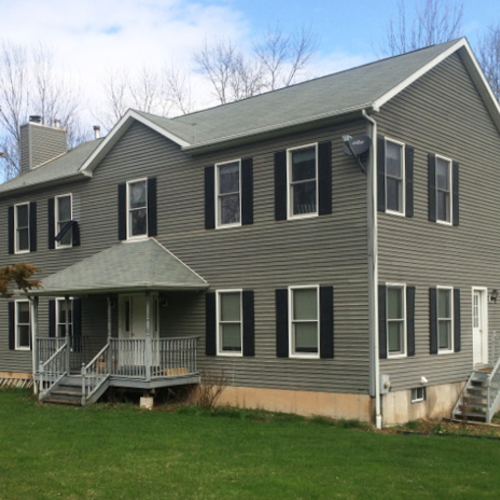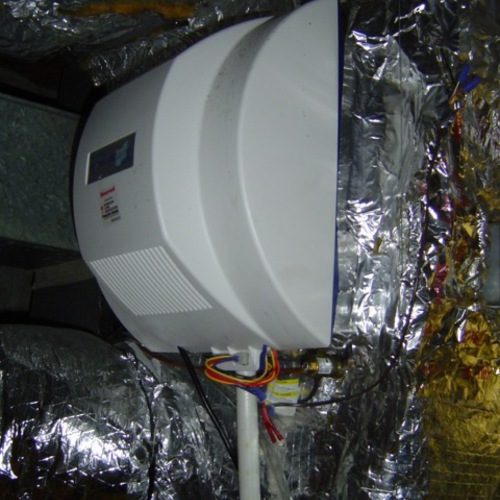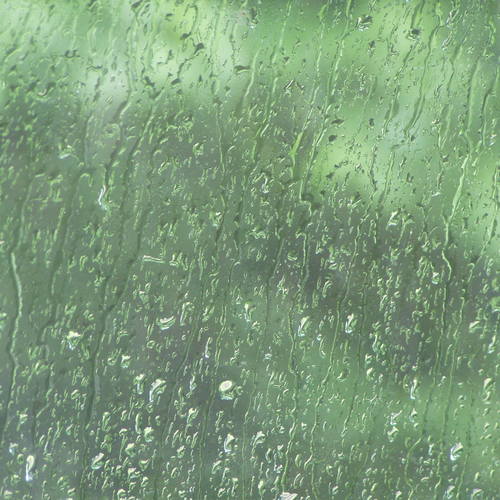
In 2001, Melinda Ballard of Dripping Springs, Texas, sued her insurance company in a dispute over the settlement amount in a mold mitigation case. The case gained national attention, inspiring thousands of homeowners to panic about the possible dangers associated with mold in their homes.
Seventeen years later, the national mold panic is subsiding. That said, some homeowners still worry about the health effects of mold in their homes. This article will address common mold worries.
Your house has mold
Mold is a common term for certain species of fungus. When mold appears on fabric, many people call it mildew. (For all intents and purposes, “mold” and “mildew” are synonyms.) Since mold species are fungi, they are distinct from algae or bacteria.
It’s important to understand that mold is everywhere — indoors and out. Human beings evolved in a mold-filled world. Most people don’t get sick when they encounter mold.
With every breath you take, you are inhaling mold spores. In addition to mold spores, most homes have at least some visible mold. I started looking in my house, and I noticed small amounts of black mold near the bottoms of the window sash in a cold bedroom. Most of the firewood in my woodbox has mold stains on it. (When firewood is freshly cut, the cut ends are usually white. Over the next few days and weeks, the cut ends of the firewood may turn gray or black, especially if it gets rained on. That’s mold.)
And of course, my kitchen has lots of mold in it. Mold runs through every piece of blue cheese I buy, which is why it tastes so good. Even in a refrigerator, the mold in blue cheese continues to grow. Fuzzy cheese tastes delicious.
According to the Centers for Disease Control (CDC),…
Weekly Newsletter
Get building science and energy efficiency advice, plus special offers, in your inbox.

This article is only available to GBA Prime Members
Sign up for a free trial and get instant access to this article as well as GBA’s complete library of premium articles and construction details.
Start Free TrialAlready a member? Log in















18 Comments
"Make sure that the indoor relative humidity in your home is no higher than 30% in winter, and no higher than 60% in summer. "
30% in winter?
Malcolm,
I think my advice is good, but some experts advise that a winter RH of 40% is OK. I might edit my piece.
In general, North Americans are more likely to err on the side of too much wintertime humidification than they are to err on the side of letting the indoor air get too dry. I'm very leery of humidifiers -- 30% RH seems plenty high enough to me. But if the indoor RH creeps up to 40%, I'll admit that most homes won't suffer damage.
Martin,
Here is my experience here in the PNW. I have two heated structures: My house, and an insulated and well air-sealed shed holding mainly books. The shed gets used very occasionally, so my premise is it can act as a control for heated buildings here with no source of indoor moisture.
Right now the shed sits at about 40% and the house 46% - 48%. My assumption is that by increasing the ventilation rate in the house I could reduce it to close to the same reading as the shed, but no further.
Is my backyard science off, or is that an inherent limit in a climate like ours?
Malcolm,
Clearly, the climate in British Columbia is different from the climate in Florida, and also different from the climate in Vermont. The colder the climate, the harder it is to see indoor relative humidity levels above 40% during the winter.
Thanks Martin. I didn't want to be missing something.
At 30% my wife and daughter are getting near daily nosebleeds, at 40 they are fine. They are more sensitive than most, but in general below 30% isn't ideal for sinus health.
I wonder: Do desert nomads suffer nosebleeds all the time? 🤷♂️
I was shooting for >40% this winter. Oops. Not that I was actually doing anything to get it up there. I just have to flip my reactions of being pleased to see 45%, and displeased to see 38%. I do have a dehumidifier I could run, but I don't think I'll go that far.
Trevor,
As my article notes, if you want to bring down your interior relative humidity in winter, there is no need to operate a dehumidifier. Just increase the run time or fan speed on your ventilation equipment.
Couldn't increasing the ventilation rate incur a bigger energy penalty than the dehumidifier? In an all electric home, the waste heat of the dehumidifier directly lowers the load on the heating system. Pulling in more air cold air, even with an HRV, increases the load on the heating system.
What is the expected lag time on humidity reduction after increasing ventilation? Hours, days? The reason I ask is that my HRV goes down to essentially nothing during the day, when no one is home. It goes back up to 100-120CFM in the evenings and weekends. Within any given 24 hour period, the variation in humidity level is on the order of a 1-3%, and it doesn't follow any pattern relating to the ventilation rate or occupancy. It seems to follow the outdoor weather, if anything.
I reread the article, and don't see any mention of or links to explanations as to what the risks are to the house with an interior humidity over 40%. Can you point me to that?
Trevor,
If your interior RH is above 40% in winter, you increase the chance that exfiltrating air will cause moisture problems on your wall sheathing or in your attic.
Of course, if you have a new home that has been built with attention to airtightness, and you have tested the home with a blower door and gotten good results, that risk is reduced. But most American houses can get into trouble if they are running their houses above 40% RH in the winter.
The waste heat from operating a dehumidifier in winter will heat your home -- but that's electric heat at 100% efficiency, which is an expensive heating fuel compared to a ductless minisplit or natural gas furnace. Operating an efficient bathroom exhaust fan -- for example, a Panasonic FV-08VKS1, which ventilates at 7 cfm per watt -- during the winter will reduce indoor RH at a lower electricity input than using a dehumidifier.
Martin, the 7 cfm/watt will be pulling in 7cfm of cold air from the outside though, right? And that 7 cubic feet of cold air will then need to be heated may use more energy than what would be required to dehumidify 7 cubic feet of the existing warm air in the building. I haven't had a chance to run the numbers.
Canada,
Yes, of course. It was just an example.
It's been well established that the lowest energy cost for ventilation occurs when using an HRV or ERV. Either method of ventilation (exhaust-only or HRV) should beat the cost of operating a dehumidifier, however, as long as the outdoor air is cold and dry.
I find 40%+RH very comfortable in the winter. Also the piano doesn't go out of tune, and it costs over $100 to tune. At 30% RH it won't stay in tune for more than a couple of weeks.
I appreciate your attempt to bring some sanity to the issue of mold, as it is often overblown. 10 years as an inspector in Florida tougjt me that. However, I don't think you are providing a balanced perspective.
The fact that the consequences to individuals varies and that different levels of exposure are necessary to cause a reaction does not mean that there is no risk. The argument that because scientists haven't nailed down all of the specifics means that it should be ignored is how we got to a climate crisis (I am not conflating these two very different issues except to say that waiting for every detail to be figured out before taking action is a bad strategy).
Joe Spurgeon PhD has used nationwide data collection to identify specific ranges for different mold types that consistently affect humans, regardless of sensitivity. While a lot more data is necessary to determine what species and what exposure thresholds are truly harmful, discounting the whole issue lacks integrity.
I agree that small bits of mold found in the home can be easily cleaned up, but addressing real mold problems is not something a homeowner can effectively tackle.
I would also caution against relying on a medical doctor to be sufficiently educated in how indoor air quality is affecting the occupant. The doctor will certainly understand the physiology but cannot sufficiently diagnose the problem due to a lack of building science knowledge, specifically related to that particular home. An evaluation of the home is necessary to evaluate the indoor air quality, including but not limited to mold, to assess what is causing the health issue.
We should all be be working together to improve the built environment and make it a safer, healthier, more comfortable, and more efficient home for the occupant. That includes inspectors, IAQ assessors, building scientists, contractors, and homeowners.
James,
I appreciate your comments. However, anyone who read my article knows that I never said "there is no risk"; nor did I "discount the whole issue."
I quoted advice from the Centers for Disease Control and the Environmental Protection Agency, and I referred readers to their web sites.
Moreover, I provided advice to homeowners on steps they can take to avoid mold.
On the question of medical diagnosis, you express your opinion that a "doctor will certainly understand the physiology but cannot sufficiently diagnose the problem." I must disagree. When it comes to medical diagnosis, only physicians are qualified. For others to attempt a diagnosis is foolish. Building scientists, contractors, and homeowners should steer clear of diagnosis -- for reasons of financial liability as well as the law.
No one has mentioned plants for both humidifying and cleaning indoor air. We have a plant we call the monster with over 30 ft of vines. In frustration with the amount of window space it took up I decided to string it up to the beams over the dining room table. It's happy and we can enjoy more sun through the window with a leafy bower above.
Nils,
Humidifying indoor air, whether with a humidifier or a 30-foot "monster house plant," makes mold more likely, not less likely. So I'm not sure why your comment is relevant to an article on mold.
Of course, many houseplant owners love their houseplants, and put up with a little mold because their houseplants make them smile. The decision on whether houseplants are good or bad, and whether you want to live in a humid house or a dry house, is ultimately up to you.
Log in or become a member to post a comment.
Sign up Log in